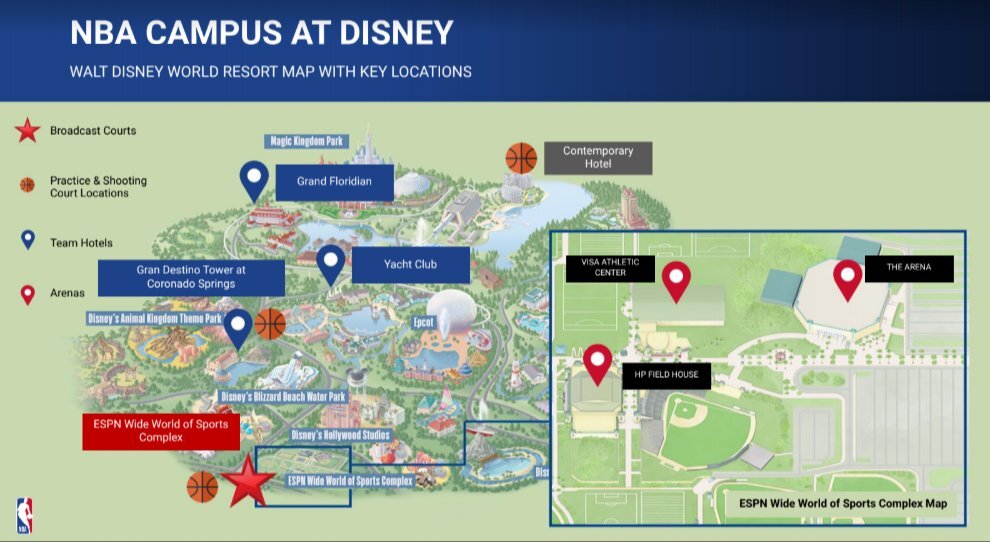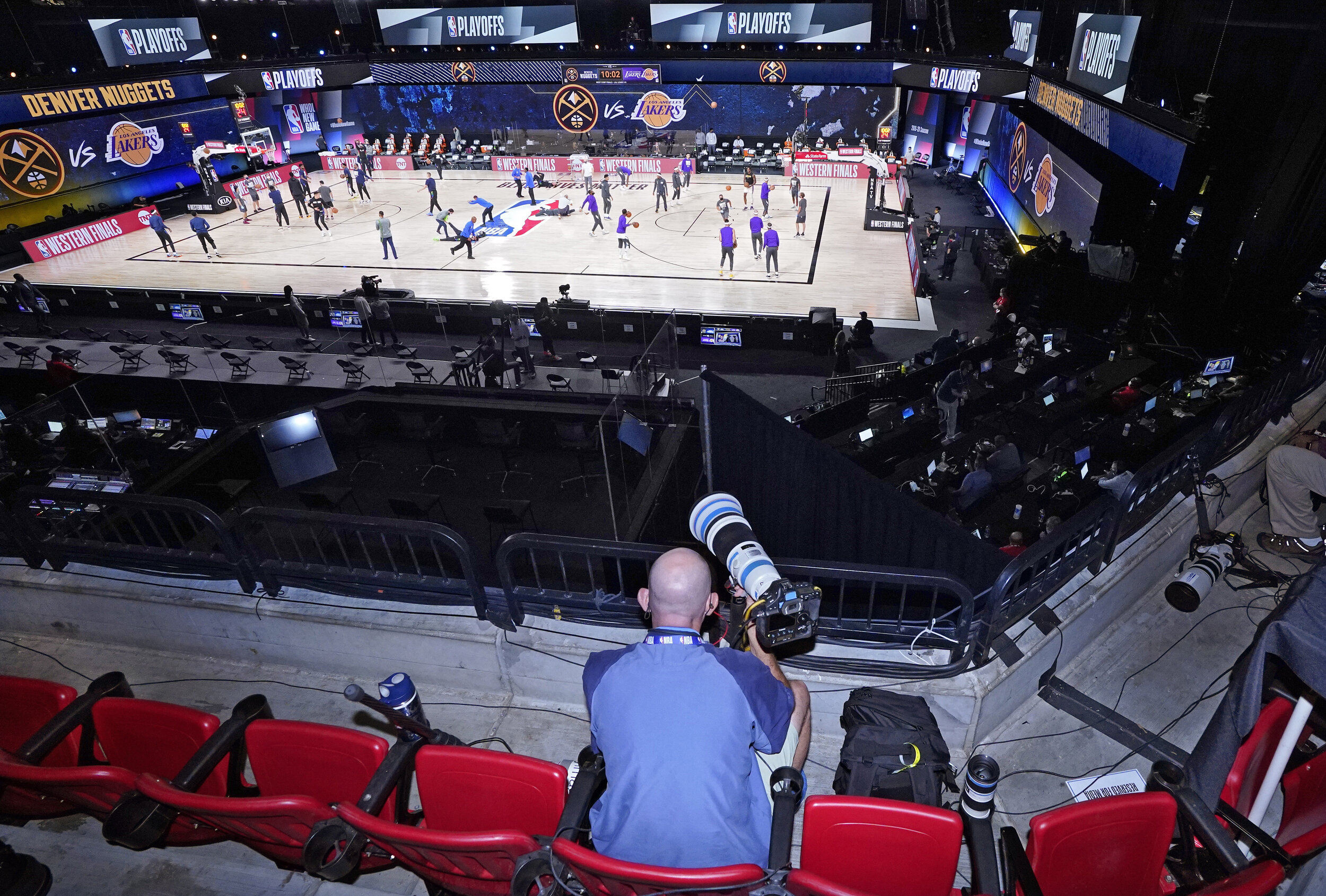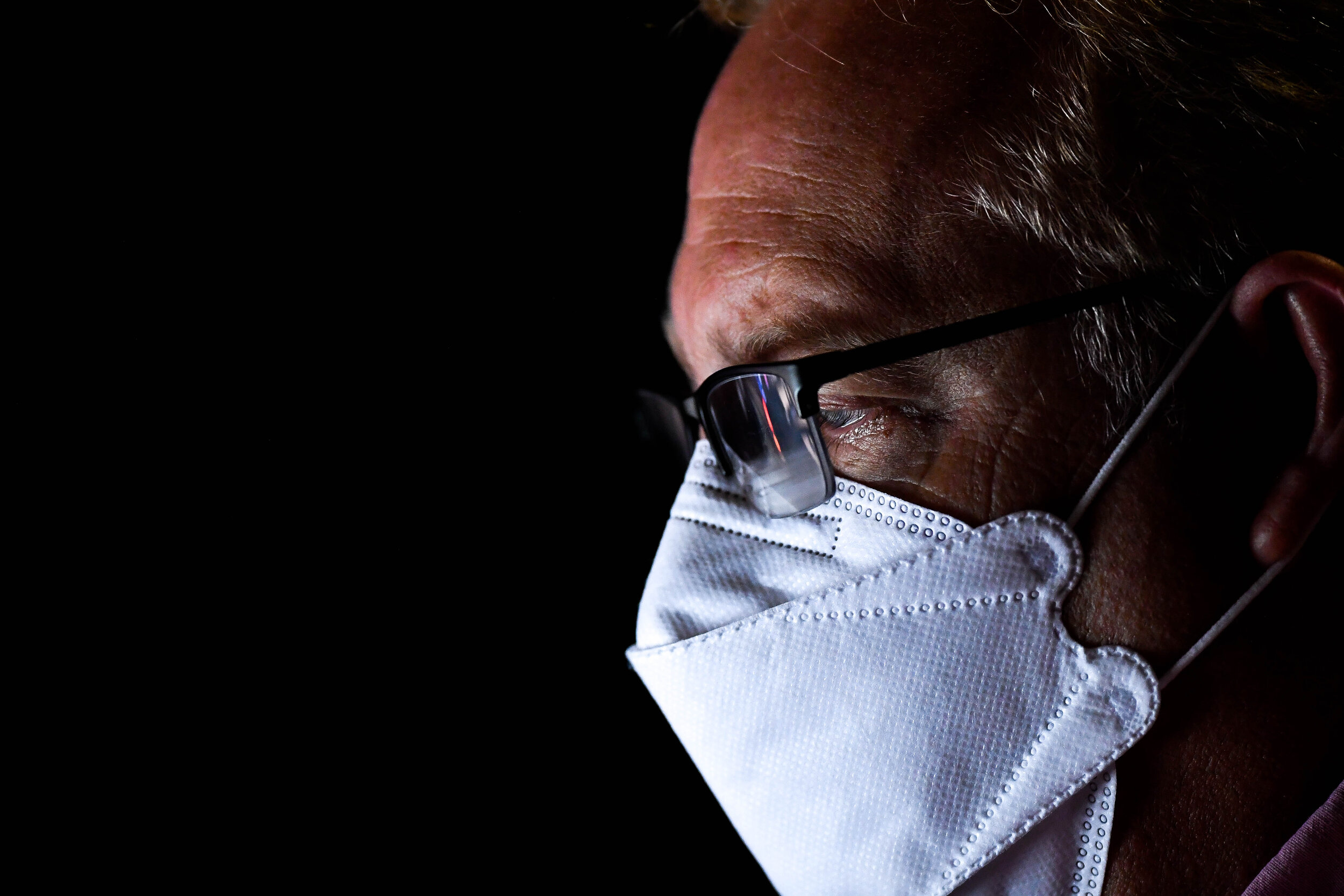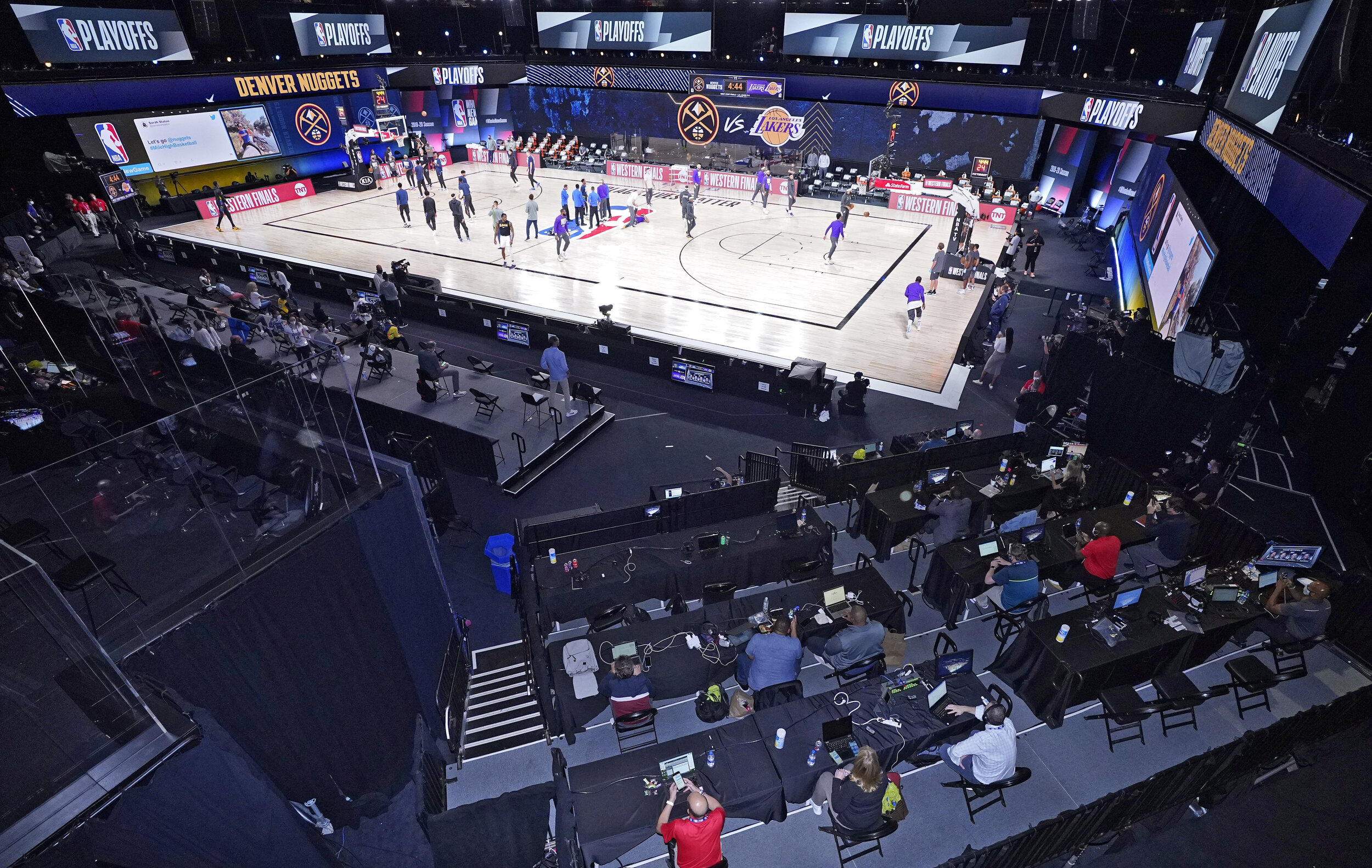Mark J Terrill - Shooting Sports in the NBA Bubble
FORTY-FIVE GAMES IN FORTY-FIVE DAYS
By Mark J. Terrill
“What was it like inside the NBA bubble?” That is what several people have asked me so I thought that I would share some of my experiences there while on assignment for the Associated Press. First, allow me to explain what “the bubble” is. After the 2020 NBA season was suspended in mid-March due to the coronavirus outbreak, the NBA came up with a plan to restart play safely in late July by playing the remaining games with 22 out of 30 teams with the best records in one place and quarantining all of the players, coaches, support staff and even some media in an isolated compound of hotels. BTW, it cost the media that were staying there between $500 and $750 per night. That’s a pretty penny to essentially be in prison for three months. That compound was part of Walt Disney World in Orlando, Florida which they had sectioned off from the tourists that were visiting the park during this time. The venues that they chose to hold all of these games were at the ESPN Wide World of Sports complex which offered three arenas that they could play four to seven games a day in. The WWS complex was also part of Disney World and a very short bus ride from the player hotels to the venues. These two locations were considered “The Bubble” and reportedly cost the NBA $150 million to finish the season there. Pretty much a perfect plan to finish the season and avoid an outbreak. The season only ended up being shortened by about 10 games or less for the remaining teams. The players who were stuck there for three months away from their families and the outside world weren’t too thrilled about the plan, though.
This was a trip that almost ended for me before it started. At one point there was a possibility of the whole thing being cancelled. As I was in the air on my way to Orlando, the players were talking about calling the whole thing off because of the two people that were shot to death during a BLM protest in Wisconsin. Fortunately, they decided to keep playing following a three day strike.
It is important to note that there were two zones at the WWS complex and people from the two were not allowed to mix. It consisted of a “Green Zone” where the players and coaches, NBA photographers, a few media writers and broadcasters could go which was the floor level at the venues as well as the compound where the players were staying. If you had watched any games, I am sure you noticed that even the NBA photographers weren’t on the court. No one was. They were shooting from corners off the court. Normally you would have at least ten photographers and videographers from various organizations sitting on the court for a typical game but there was nothing normal about this situation. We would also normally have remote cameras in various places on the court and in the catwalk for different and interesting angles. There was none of that here. The only people photographing on the floor level and putting remotes around the court were working for the NBA.
There was also a “Yellow Zone” where other media writers, photographers, NBA staff and VIP’s were positioned which was one level up from the floor. This is where I was. This meant shooting from from a single position from above which is definitely not something that I am accustomed to. We were all basically even with the basket at TV right. Even though the stands at the other end of the court were unused, hat was the only position for 45 games straight. Anyone that has ever shot basketball from an overhead position knows that it is challenging to make a clean and interesting picture from there, much less shooting from the same spot night after night. You really feel disconnected from the game up there. On the bright side, shooting from above meant that I was not locked into the bubble and was allowed to roam beautiful Orlando in my off-time. Also, there was a media hotel for people working in the yellow zone that cost about $150 per night.
That being said, there was no off-time for the first two weeks that I was there. It was mostly two games a day until the conference. You would shoot the first game in one venue and then run about 200 yards (often in a downpour) with all of your gear to the next venue where the second game had usually already started for some reason. There was at least one game where I missed the entire first quarter before I was able to get in there. Once the conference finals started, though, it was a game just about every day and then trailed off to game every two or three days once the finals started.
Regardless of what zone you were in, everyone had to get COVID tested every 72 hours and prove that you were clear before covering any games. The testing increased to every 48 hours once the finals started. They would scan your credential before you entered each venue and here were also temperature checks at each venue They also made us wear a contact tracing/tracking device that would beep at you if you get within four feet of anyone else which was sort of hard to do since there weren’t many people there to begin with. The essentially knew where you were and who you were with at all times while at WWS. With the exception of all of the security, bomb sniffing dogs and a few Disney staff, all of which had the usual “Happiest Place on Earth” attitude, walking the normally bustling Disney Wide World of Sports campus reminded me of a Walking Dead episode. It was mostly desolate and very surreal as was the feeling inside the venues.
What really made the situation livable and even down right enjoyable was that the AP rented a house for the three months that we were there. Our newest L.A. staffer Ashley Landis was there for us for the first month and a half and then I came in and took over for the rest. Anyone that has ever been on a long travel assignment knows that living out of a hotel and a suitcase can be tiresome and you tend to get homesick for some of the simple things that you take for granted like cooking a meal for yourself or not hearing doors get slammed all night. Getting a rented house solved most of the “home sick” problems and it was cheaper than the media hotel that the NBA was offering to us. Most of the time that I was there, I didn’t feel like I was on a travel assignment and it was a short 8 minute commute to the WWS complex.
Most of my meals were either made at home after work or take-out from somewhere. One of the joys of being on a travel assignment is eating with friends (aka your competition). Unfortunately, because of the pandemic, there wasn’t a lot of opportunity for that although I was able to meet up with them at the media hotel to have lunch outside a few times because everyone had to go there every few days to get tested.
That brings up the best part about having a rented house in that situation. Once the NBA Finals started, the NBA decided, without warning, to completely lock down the media hotel that, up until that point, had been in the yellow zone where people were free to come and go. That meant that no one could leave except to go to the venues for games. Los Angeles Times photographer Wally Skalij arrived just as this lock-down began and wasn’t even allowed to leave his room until he got a negative COVID test the next day. We believe that this was because team owners, executives and NBA family members were staying there. Meanwhile, I was free to roam and therefore would often bring lunch to my friends who were stuck there for the two weeks that the finals went on for.
As far as I know, no one actually got sick while I was there but there was a scare. The photographer that I had been sitting closest to the entire time and socializing with tested positive during the conference finals. Obviously, this was pretty unnerving for me and him. He was quarantined to his hotel room for several days while they retested him multiple times and I was concerned that, since the contact tracing devices would have told them that were were near each other, I would be quarantined as well. As it turned out, it was a false positive which was a relief but the idea that a false positive could leave the Associated Press without coverage for two or three playoff games was just as unnerving as actually testing positive.
Because of the distance that they had us at, I shot most of the games with a 600 f4, a 400 2.8 and a 200-600. In normal times and with a normal game, I would almost always do my own editing, captioning and transmitting during a break in the game or at halftime but these were not normal times so I had fantastic remote editors in various parts of the country to whom I would push about 600 select pictures per game from the camera via FTP via Wi-Fi and Ethernet. This was a huge help as it allowed me to concentrate on shooting the game and nothing else. Most of the editors were actually photographers that had nothing to shoot that particular day and volunteered to assist me. They would in turn pick 100 or so to crop, caption and send out to the wire. This method allowed us to get a picture on the wire within just a few minutes of the game starting to make early deadlines for all of the newspapers and websites that were waiting. You might be wondering why I would send the editors so many to only have one sixth sent out. This is mostly to give them options on any given play and the extra frames help them identify players when my voice tag recording that gets attached to the pictures wasn’t enough. I was also allowed to have a remote camera near my shooting position for a little wider view of the court which was helpful as a backup since a 600mm is extremely tight. That camera was tethered to my computer which allowed me to control it, download the pictures remotely and then drop them to my remote editor.
There were a few little hiccups along the way with the exception of the very limited access and the lockdown problem at the media hotel. All-in-all the NBA put together a pretty good plan. The food that the NBA provided wasn’t bad either. They split off an ESPN Zone restaurant (half for the green zone and half for the yellow zone) for meals and Mickey Mouse shaped ice cream sandwiches.
All-in-all, it was one of the better experiences that I have had on a travel assignment and, because of the unusual circumstances, one that I will remember for a lifetime.
Mark J. Terrill has been a staff photographer with the Associated Press since 1997.








